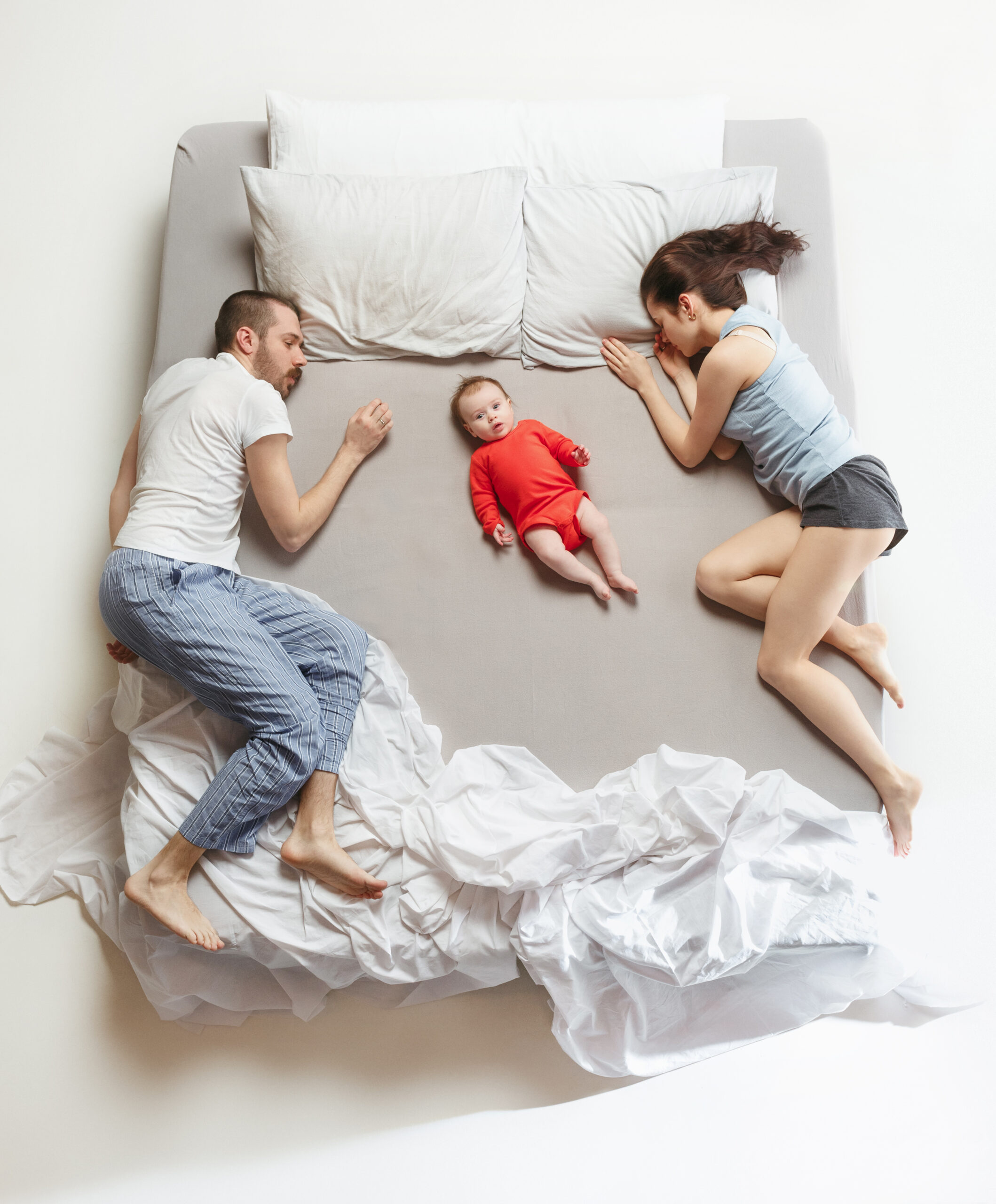
How to Take Your Bed Back and Leave Co-Sleeping Behind
I don’t know about you. But I’ve never been a fan of roller coasters.
Sure, they look like fun. From a distance. But once you get rolling, it’s a whole different story.
And parenting can be the same way.
When your little one joined your family, you had visions of laying your little one peacefully down in the crib each night, after he’d fallen asleep quietly in your arms.
And then, your dreams crashed into reality. You never imagined it would be like this.
Maybe you started cosleeping because your little one just won’t settle on his own. Maybe he was waking constantly at night, and bringing him into your bed seemed easier.
“It’s only temporary,” you tell friends. “We’re just doing it until he learns to sleep by himself.”
Don’t worry. There’s hope. With the right approach, you can take your bed back… and get your little one sleeping on his own. The key is to have a plan — and stay consistent.
More restful nights are right around the corner. Ready? Let’s do this.
Why co-sleeping isn’t good for your child… or you
With so many parents jumping on the co-sleeping train, it’s easy to think it must be good for your baby. You’ll hear some people say that it helps them get a better night’s sleep. Others say it promotes a closer attachment with their child.
But look at the scientific evidence, and you get a different picture.
Bed-sharing is strongly linked to the increased risk of infant death, typically by suffocation. Recently, a study in the American Journal of Public Health examined over 3,000 cases of sudden unexpected infant deaths. In 70% of cases, infants were sleeping on a sleeping surface not recommended for infants, and in 64% of cases, they were sharing a sleeping surface with someone else.
Sleeping on the back is the only safe sleeping position. Infants should not share a sleeping surface with other sleepers, particularly when sleeping on a couch, chair, or recliner. For more information, check out the full set of guidelines on safe sleeping practices for infants issued by the American Academy of Pediatrics.
In addition, a recent study in Norway found that children who cosleep in the first few months tend to develop poor sleep habits as toddlers. This survey of over 55,000 parents reached several important findings:
- Babies who slept in bed-sharing arrangements at six months tended to have shorter sleep and more frequent nighttime awakenings at eighteen months.
- Babies who were poor sleepers at six months were more likely to have problems at eighteen months.
Most importantly, think about yourself. It simply isn’t healthy to put your child at the center of every aspect of your life. Sometimes your child needs to fit into your life, rather than being the focus.
Here’s the good news. Remembering the fundamentals of infant sleep can make the transition a lot easier. Let’s look at how.
Building a new sleep routine
I’ve talked on this blog before about how unhealthy sleep associations can make bedtime a lot more stressful. When your child needs to be rocked or nursed to fall asleep, he won’t be able to get to sleep without your help.
Co-sleeping is the ultimate unhealthy sleep association. To fall asleep, your child needs to be physically in your bed, next to you. Otherwise, sleep isn’t happening — for either of you. You can imagine the problems this can cause.
The solution? Build new, healthier bedtime routines. Teach your child that he can get to sleep without you at his side.
Naturally, the younger your child is, the easier it’ll be to break the habit. If he’s below a year or so, setting new routines will be a lot easier. (In a minute, we’ll talk about how to handle an older co-sleeper.)
The key to success is having a plan. If you decide on the spur of the moment one night to just start putting your little angel down in his crib, you’re setting yourself up for disaster.
Instead, plan out a new, specific bedtime routine. Think about how the hour or so before bedtime will go, and choose activities that will help your child wind down and get ready to sleep. Take a bath. Read a story together. Listen to some quiet music. Check out my tips for creating an evening routine that helps your baby relax.
Before you make the transition, spend some time reading and playing in your child’s room to make it a place he wants to be. Choose fun blankets and bedsheets linked to your child’s interests. Have your child’s favorite stuffed animals waiting for him in the crib.
And let’s be real. This is a big transition for
your little one. Expect tears. Be consistent, and don’t go running to comfort your child if he cries when you lay him down to sleep.
Before long, bedtime will be easier. For everyone.
Got an older co-sleeper? Focus on easing the transition
If your child is over eighteen months, you’ve got a bigger challenge on your hands. Co-sleeping is a more deeply ingrained habit by now, and it’ll take more time and effort to break it.
But you can do it. The key to success is easing the transition.
Break the transition into baby steps. Take one small step at a time. And every step of the way, focus on showing confidence that your little one can handle sleeping on her own — just like a grown-up.
Start with a conversation. Explain that your child is a big girl and ready to sleep on her own now. Tell her that you and Daddy (or you and Mommy, or you) love her… but you need some time on your own, too. Show her how excited you are that she’s about to start sleeping all by herself in her own bed!
Reexamine your bedtime routine. If you don’t have a solid bedtime routine yet, now is the time to start. The goal is to get your little one in the habit of winding down each evening on her own, without needing to be by your side. Check out the guidelines in the section above, and plan out a routine that helps her do that.
Take it step by step. Eventually, you’ll be ready to help your child make the move to her bed. Take it slow. Start off by having her just take naps in her own bed. Before long, you can start doing her nighttime routine in her bedroom too.
Soon she’ll be ready to make the transition to her own bed. If she needs support with the transition, you may want to consider sleeping in her room for a couple of nights (in a sleeping bag or on an air mattress) to help her get comfortable.

Be ready for pushback. When your child finally moves to his own bed, be ready. There’s a good chance she’ll come running into your room, tears in her eyes, wanting to get back into your bed.
Keep in mind, many parents fail to break the co-sleeping habit because they relent at this point. If you allow your child into your bed “just this once,” you’re teaching her that getting back into your bed is an option. It’ll make the transition that much harder.
Staying consistent is absolutely critical. Show your child love. But return her to her own bed.
Getting your bed back will be totally worth it
When you got into the whole parenting thing, having your kid in your bed every night probably wasn’t what you had in mind. And if you’ve tried once or twice to break the habit already, it can feel impossible to get out of.
But by taking the right steps — and staying consistent — you can stop co-sleeping — and you can take your bed back.
And for the first time in a long time, your whole family can get a good night’s sleep.
Need More Support?
I’ve got your back.I’ve helped hundreds of families get a great night’s sleep — and I can help yours, too. Check out my sleep packages!





















